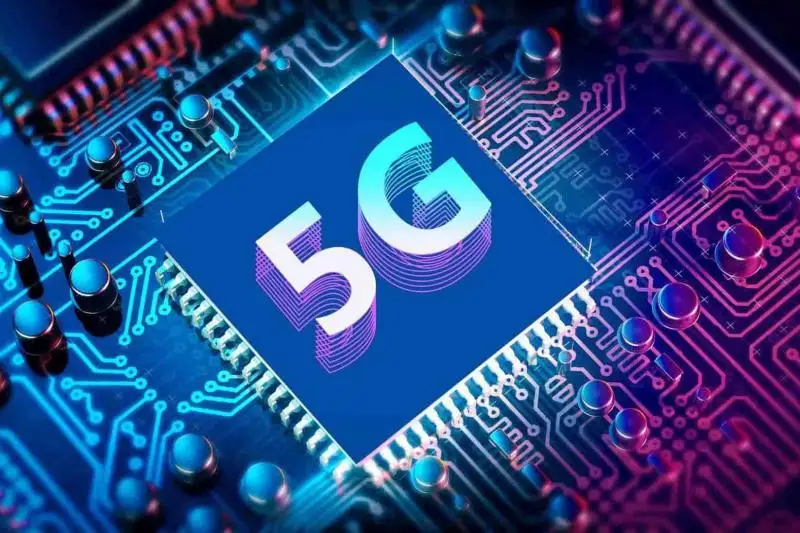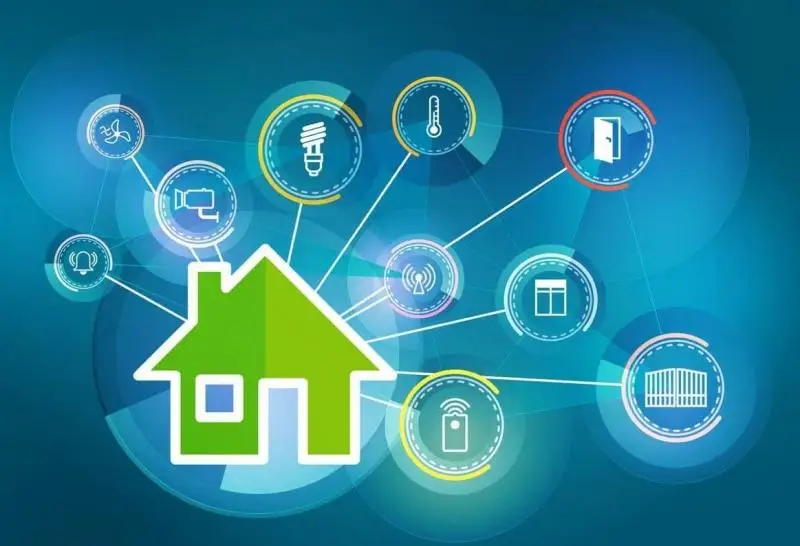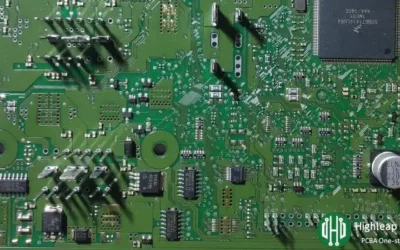Back to blog
5g PCB: Applications, Challenges & Opportunities

PCBs are the backbone of modern electronic devices, enabling connectivity and signal transmission. With the advent of 5G technology, PCB design and production face new challenges and opportunities. This comprehensive article explores the implications of 5G on PCBs, delving into its applications, challenges, and potential opportunities.
Understanding 5G
5G represents the latest generation in mobile broadband technology, available in low-band, high-band, and mid-band variants. It utilizes modular cell sites to transmit encoded data over radio waves via wired and wireless networks. Compared to its predecessor, 4G, 5G offers several significant advantages.
Fast Speeds and Digital Signals
5G boasts a much larger bandwidth, providing significantly faster speeds, with the potential to reach up to 20 Gbps compared to 4G’s 1 Gbps. This results in rapid response times, enhancing user experience.
Lower Inactivity
5G networks, whether sub-6 Gigahertz or mmWave, exhibit better connectivity than traditional 4G networks. This improved reliability extends to new fields and applications, expanding the technology’s reach.
Enhanced Connectivity and High Thermal Conductivity
5G’s faster speeds and lower latency enable more devices, such as cloud applications, machine-learning technologies, sensors, and smart devices, to connect to the internet seamlessly.
Greater Coverage and Electrical Connections
5G’s improved cellular-to-Wi-Fi mobility and communication range have far-reaching implications, enabling internet access in previously inaccessible areas.
Implications for PCB Design and Production
Advanced Applications and Connectivity
5G’s deployment necessitates PCBs capable of handling high-frequency signals and supporting complex antenna arrays. This demands innovative designs and materials with superior thermal conductivity and dielectric properties to manage heat dissipation effectively.
Enhanced Performance Requirements
With speeds potentially reaching up to 20 Gbps, 5G PCBs enable real-time data processing crucial for applications like autonomous vehicles, remote medical diagnostics, and immersive entertainment experiences. Huawei, a leader in telecommunications infrastructure, plays a pivotal role in advancing 5G technology globally, influencing PCB design standards and market dynamics.
Major Applications and Benefits of 5G PCBs
As 5G technology continues to advance, it unlocks a multitude of applications across various industries, each reaping unique benefits from the capabilities of 5G PCBs.
Smart Homes
Smart homes represent one of the most promising frontiers for 5G PCBs. These advanced PCBs enable the seamless connection of mobile devices, such as smartphones and tablets, to smart home systems. The advantages include:
- Real-time Monitoring: With 5G’s lightning-fast speeds, users can monitor and manage various functions of their smart homes in real-time. This includes controlling smart lighting, security systems, and even household appliances.
- Wireless Connectivity: 5G PCBs facilitate wireless connectivity, eliminating the need for complex wiring systems within homes. This not only enhances aesthetics but also simplifies installation.
- CCTV Footage: The high-speed capabilities of 5G enable real-time viewing of CCTV footage on smartphones, providing homeowners with enhanced security and peace of mind.
Fast-Speed Mobile Networks
5G PCBs play a pivotal role in the deployment of fast-speed mobile networks, delivering substantial improvements in communication efficiency:
- Efficient Voice and Text Communication: 5G’s high-speed capabilities enable voice and text communication to become highly efficient at higher speeds. This means clearer voice calls and near-instantaneous text messaging.
- Enhanced Transmission Rates: The enhanced transmission rates of 5G PCBs simplify phone calls and text messaging. This is particularly valuable in scenarios requiring rapid and reliable communication, such as emergency services and critical infrastructure.
Logistics and Power Supply Lines
The logistics and supply chain industries experience a transformation with the integration of 5G PCBs:
- Logistics Tracking: 5G enables logistics companies to track shipments and vehicles in real-time. This results in more efficient route planning, reduced delivery times, and improved overall logistics operations.
- Online Shipment Management: With the aid of superfast 5G mobile devices, online shipment management becomes seamless and responsive. Customers can track the progress of their shipments in real-time, enhancing transparency and satisfaction.
- Power Supply Optimization: 5G PCBs facilitate smart grid systems, allowing power supply companies to optimize energy distribution. This reduces energy wastage, enhances reliability, and contributes to a greener environment.
Entertainment
The entertainment industry benefits significantly from 5G PCBs, providing consumers with seamless and immersive experiences:
- Glitch-Free Live Streaming: 5G’s lightning-fast network ensures glitch-free live streaming of shows, sports events, and movies. Viewers can enjoy high-quality video content without interruptions or buffering delays.
- Rapid Download Speeds: 5G PCBs enable rapid download speeds, allowing users to access large media files, games, and apps in a matter of seconds. This revolutionizes content consumption and online gaming experiences.
- High-Quality Visuals: The high bandwidth of 5G PCBs supports high-definition and even 4K video streaming on mobile devices, enhancing the visual quality of entertainment content.
Healthcare Sector
In the healthcare sector, 5G PCBs bring about a paradigm shift by providing real-time data and enhancing medical procedures:
- Real-Time Surgical Footage: Surgeons can utilize 5G-enabled devices to broadcast real-time footage of surgeries. This capability is invaluable for medical training, remote consultations, and improving patient outcomes.
- Telemedicine: 5G PCBs enable seamless telemedicine services, allowing patients to consult with healthcare professionals remotely. This is particularly beneficial in rural or underserved areas, ensuring access to quality healthcare.
- Data-Intensive Medical Applications: Medical devices and applications that require high-speed data transmission, such as remote monitoring of vital signs, benefit from the high throughput of 5G PCBs. This leads to more accurate and timely diagnostics and treatments.
5G PCBs are at the forefront of technological advancements, enabling a wide range of applications across industries. From smart homes to healthcare, these PCBs play a pivotal role in revolutionizing connectivity, communication, and real-time data access, ultimately improving the quality of life and driving innovation across sectors.

Opportunities & Challenges of 5G Technology in PCB Production
The advent of 5G technology has brought about significant transformations in the PCB industry, reshaping its landscape and demanding new approaches from PCB companies. Here, we delve into the profound impact of 5G on PCB companies, exploring both the challenges and opportunities it presents.
Challenges Faced by PCB Companies due to 5G
1. Complex Antenna Designs
- Higher Frequency Requirements: 5G operates at extremely high frequencies, necessitating complex antenna designs to support these frequencies effectively.
- Array Antennas: The deployment of 5G networks requires an increased number of array antennas and base stations, which pose challenges in terms of design, integration, and space constraints.
2. Heat Management
- Increased Heat Generation: 5G’s higher speed and power output lead to increased heat generation within PCBs. Efficient heat management becomes crucial to prevent PCB failure and maintain signal integrity.
3. Advanced Materials
- Materials Innovation: To meet the demands of 5G technology, PCB companies need to explore advanced materials with superior thermal conductivity and dielectric properties.
4. Compact Designs
- Miniaturization: As consumer devices become smaller and more compact, PCB companies must adapt to produce smaller, lighter, and more efficient boards without compromising performance.
Opportunities for PCB Companies with 5G
1. Market Growth
- Expanding Demand: The rapid proliferation of 5G technology drives increased demand for PCBs across various sectors, including telecommunications, automotive, healthcare, and IoT (Internet of Things).
2. Technological Advancements
- Investing in R&D: PCB companies have the opportunity to invest in research and development to develop innovative solutions and technologies that cater to 5G-specific requirements.
3. Diversification
- Diversifying Product Portfolio: The integration of 5G into various industries opens avenues for PCB companies to diversify their product portfolios, serving sectors beyond traditional consumer electronics.
4. High-Performance PCBs
- High-Performance PCBs: Companies specializing in high-performance PCBs can thrive as the demand for PCBs capable of handling 5G’s high-speed data transmission and low latency increases.
5. Customization
- Customization and Specialization: PCB companies can specialize in providing customized solutions tailored to specific 5G applications, catering to the unique needs of different industries.
6. Sustainable Practices
- Sustainability: Embracing environmentally friendly practices and materials can be a distinguishing factor for PCB companies, as sustainability gains importance in manufacturing.
7. Global Expansion
- Global Reach: With 5G being adopted worldwide, PCB companies can explore international markets and expand their global reach, capitalizing on the global demand for 5G infrastructure and devices.
5G technology has presented both challenges and opportunities for PCB companies. While they face complexities in antenna design, heat management, and material selection, they also have the chance to grow their businesses by diversifying, investing in R&D, and offering specialized solutions. As 5G continues to evolve and penetrate various industries, PCB companies that adapt and innovate stand to thrive in this dynamic and transformative landscape.
Conclusion
5G technology has firmly established its place in the information age, significantly impacting PCB layout and production. PCB manufacturers and designers are investing in cutting-edge technologies to ensure their products are compatible with 5G systems and leverage the advantages it offers. While challenges exist, innovative solutions enable the creation of reliable 5G PCBs that maximize the benefits of this transformative technology.
Related Articles
Automotive PCBs: Design,Manufacturing and Applications
This comprehensive guide explores the world of automotive PCBs, examining their unique characteristics, applications, and the latest industry trends.
How DDR5 RAM Enhances High-Performance Computing Systems
This article delves deep into the technical differences between DDR4 and DDR5 RAM, offering insights that are crucial for PCB designers to make informed decisions.
How to DIY a 4680 Battery into a Portable Power Bank and LED Flashlight
This section will guide you through the process, emphasizing key steps and precautions to ensure that your DIY power bank project is both safe and fully functional.




